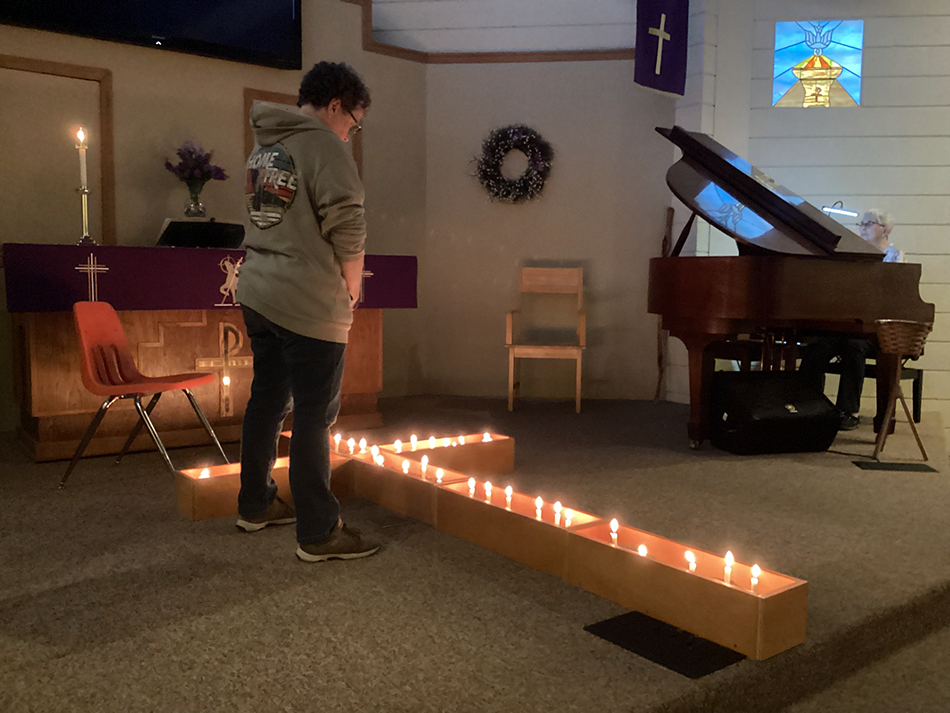Before I begin, I must advise you as the reader, that this will appear in a news letter for Wartburg Seminary.
Although to keep it within the 500 word limit, it was edited somewhat. Below you will find the article in its entirety. I have also included the footnotes for this post, where it will not be included in the article to. So, now to the reflection……
The Indians, Native Americans or American Indians often refer to the reservation as “The Rez”. Even the term of who they are as a people are and how they should be referred to can be tricky. One term that I have heard and I think fits the best is, First Peoples. Even if you believe that they as a whole had in fact migrated to what we now call the North American continent across the area called the Bering Strait, they were here “First” before those who came from the east thousands of years later to claim the land as their own.
To be on the Rez was a great time for reflection as to what the Holy Spirit was actively doing today with the First Peoples, myself and others. There seems to be a trend in Christianity to become more spiritual and some have been drawn to seek out First Peoples and their spirituality. Some of the people on the Rez are Christian having been converted by missionaries in the 1800’s and early 1900’s. Others have refused to convert, some have re-connected to their ancient beliefs and others have found a way to incorporate the traditions of their religious heritage into Christianity. Each and every time I saw this incorporation it never detracted from the core of our common Christian faith. In fact, it only enhanced it and allowed me to become more immersed in my worship of God.
During my time on the Rez this January, I was provided with an opportunity to
learn about life on the Rez from the perspectives of those who live there. I would also add that I learned about work there as well but the unemployment rate can reach upwards of 80%.[1] It is an understatement to say that life there is difficult. In 2010 the suicide rate for teens was 150% higher than the national average.[2] The infant mortality being 300% higher than the national average.[3]
What are the factors that make this Sovereign Nation of the Lakota the way they are today? That could take far more time and space than I have here. However, consider this: up until about 1975, American Indians were often forcibly, at the age of five, taken away from their homes to live at Christian Boarding Schools.[4] While there they were not allowed to dress in their native attire, speak their native language and the list goes on. The United States Government forcibly tried to remove the First Peoples culture by trying to “Kill the Indian…Save the Man”.[5] Many children faced mental, physical and sexual abuse.[6] Some have called this an attempt at genocide.
For all that was done in the past to them the First Peoples, at least in Pine Ridge,  have been attempting to recover their stolen culture. There is hope among them. How does this continue? Through your awareness, action and because God has not and will not give up on God’s people. Even the non-Christians of the Lakota believe in a creator. Christians believe the God as the Creator. There is the starting point for understanding, rebuilding, appreciating each other’s culture and walking hand in hand with God the Creator in the rebuilding of the First People’s nations.
have been attempting to recover their stolen culture. There is hope among them. How does this continue? Through your awareness, action and because God has not and will not give up on God’s people. Even the non-Christians of the Lakota believe in a creator. Christians believe the God as the Creator. There is the starting point for understanding, rebuilding, appreciating each other’s culture and walking hand in hand with God the Creator in the rebuilding of the First People’s nations.
For further reflections and links to information about the Lakota and the First People’s, please see my January posts on my blog.
[1] “Obama’s Indian Problem | World News | The Guardian,” accessed February 9, 2013, http://www.guardian.co.uk/global/2010/jan/11/native-americans-reservations-poverty-obama.
[2] “Pine Ridge Statistics,” accessed February 9, 2013, http://www.4aihf.org/id40.html.
Moved to: http://www.4aihf.org/id26.html
[3] “Pine Ridge Statistics,” accessed February 9, 2013, http://www.4aihf.org/id40.html.
Moved to: http://www.4aihf.org/id26.html
[4] “Soul Wound: The Legacy of Native American Schools | Amnesty International USA,” accessed February 9, 2013, http://www.amnestyusa.org/node/87342.
[5] “American Indian Boarding Schools Haunt Many : NPR,” accessed February 9, 2013, http://www.npr.org/templates/story/story.php?storyId=16516865.
[6] “Soul Wound: The Legacy of Native American Schools | Amnesty International USA,” accessed February 9, 2013, http://www.amnestyusa.org/node/87342.
Discover more from Messy Spirituality
Subscribe to get the latest posts sent to your email.

